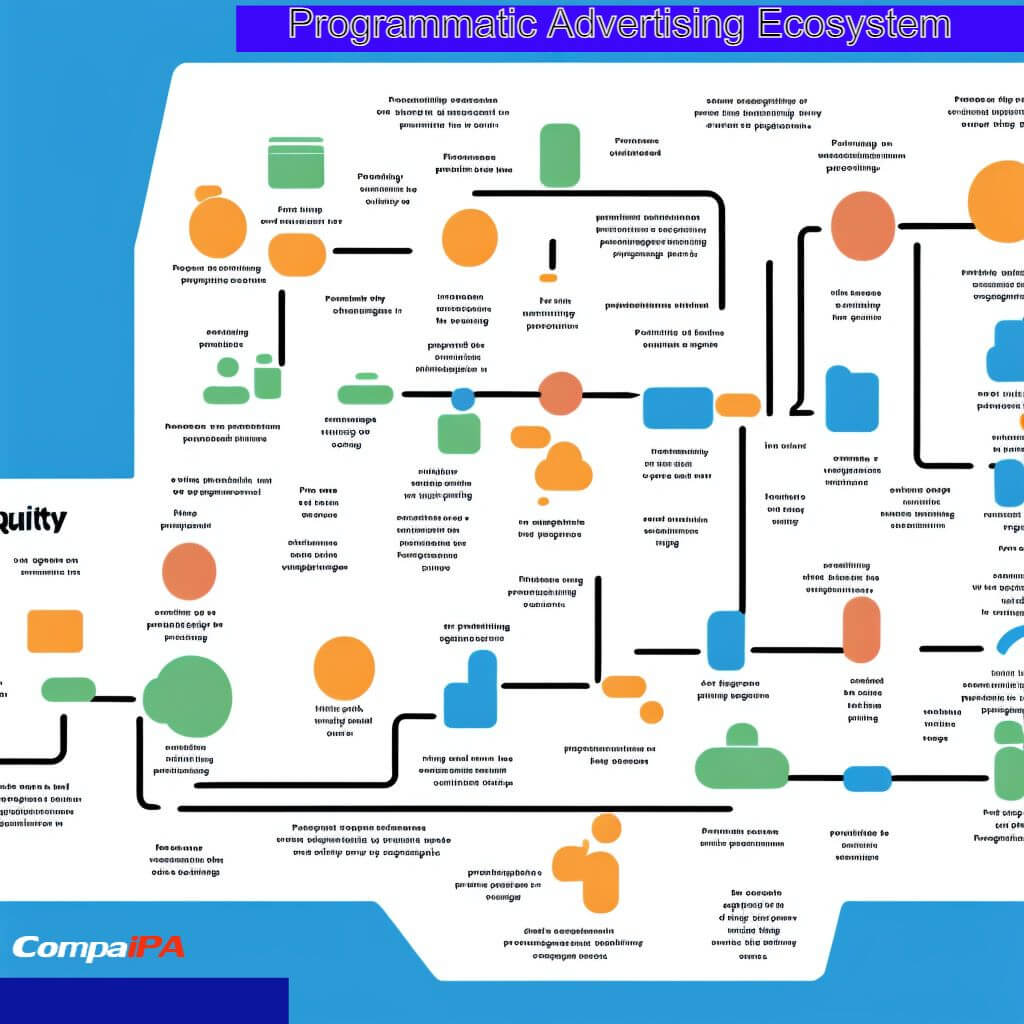
Table of Contents
ToggleDemand-side Platform Advertising
Get the best results from your Demand-side Platform Advertising. Learn effective strategies, guidance, and insights from experts in the field to guarantee better performance, increased ROAS, and improved user engagement. This blog post will discuss the potential benefits and opportunities of using demand-side platform (DSP) advertising to reach and engage potential customers. We will explore the different ways to take advantage of this technology and how it can be used to create targeted and effective campaigns. We will also look at the different types of demand-side platform advertising, the elements of successful campaigns, and the potential risks involved. Lastly, examine the trends in DSP advertising and provide tips for creating and optimizing.
Table of Contents
What’s Demand-side Platform Advertising?
Targeting Accuracy
Elements of a Successful Demand-side Platform Advertising Campaign
Creative Assets
Exploring the Different Types of Demand-side Platform Advertising
Harnessing the Power of Demand-side Platform Advertising
Examining the Trends in Demand-side Platform Advertising – Overview and Benefits
Tips for Creating and Optimizing Demand-side Platform Advertising Campaigns
Potential Risks Involved in Demand-side Platform Advertising
What is Demand-Side Platform Advertising?
Demand-side Platform advertising has become a growing trend in recent years and it’s easy to see why with access to real-time data and programmatic buying, Demand-side Platform
advertising provides an efficient way for digital marketers to reach their target audience with the right message at the right time. But what exactly is a demand-side platform (DSP advertising? Through this comprehensive guide, we will provide you with an introduction to what Demand-side Platform advertising entails and how it can help your business grow
A demand-side platform (DSP) is a technology platform that enables buyers of online display media inventory from multiple sources to use one platform via automated processes and algorithms. It allows advertisers or ad agencies operating on behalf of their clients the ability to buy ad impressions for campaigns targeting specific audiences across different websites, search networks, and video sites – without having to manually insert individual bids into each network or website they advertise on. This kind of automation results in improved efficiency when purchasing ads as well as increased accuracy when targeting the potential customers who are most likely going to be interested in advertised services or products
Targeting Accuracy
At its core, a Demand-side Platform gives the advertisers the power of selectivity when deciding where and to whom messages should be delivered making sure that only qualified traffic reaches its designated destination instead of wasting money sending out random waves hoping something sticks somewhere else down ‘the line’ - which would otherwise happen if traditional manual methods were used. Demand-side Platform Advertising makes sure every penny spent goes towards reaching users who are most likely to engage with the ads - thus making it easier for the brands to focus on achieving a maximum ROI through better optimization techniques!

Furthermore, advanced analytics provided by machine learning algorithms within many modern-day marketing platforms and learning more about user behavior over time have created further sophistication options such as retargeting those same users specifically later down 'the road', based on previous interactions seen between the said user and brand prior plus lots more possibilities brought about by combining creative and analytical thinking together to make Demand-side Platforms exceptionally powerful tools indeed!
Demand-side Platform (DSP) Advertising frees up limited resources allowing advertisers and ad agencies to tremendously reduce the tedious workload traditionally associated with targeted ad campaign planning/execution process plus provides even further opportunities allowing unseen levels of creativity. Regardless of whether you're running performance-focused campaigns or wanting to achieve tangible results through a metrics-driven approach or simply willing to take advantage of market innovation progress happening either way; consider investing in some alternative solutions such as utilizing benefits stemming from embracing all things related to Demand-side Platform Advertising today!
Elements of a Successful Demand-side Platform Advertising Campaign
It’s no secret that digital marketing is on the rise, and businesses need to do all they can to stay ahead of their competition. One effective way of doing this is through a Demand-side Platform (DSP) advertising campaign. A Demand-side Platform campaign helps you target specific audiences in order to generate leads and sales. The key elements for ensuring a successful Demand-side Platform advertising campaign include optimizing your ad spend, creating compelling creative assets, measuring performance metrics, and using targeting tools effectively.
Now is the time to optimize your budget when it comes to launching an effective Demand-side Platform advertising campaign utilizing automation technologies such as programmatic buying that can free up time and money which would otherwise be spent manually bidding on ads or purchasing inventory across different platforms – allowing marketers more control over their daily budgets for maximum efficiency and ROI optimization.
Additionally, utilizing data sources such as first-party data from surveys or CRM systems allows advertisers better understand their customers’ needs while boosting relevancy when gauging user intent in various internet channels – whether it is mobile devices or social media sites such as Facebook and Twitter - helping them get better returns from every dollar spent towards their ad campaigns!
Creative Assets
Creating appealing creative assets should also be considered while planning out a successful DSP Advertising Campaign – especially since images play an enormous role when trying to catch one’s attention online! Make sure that all visuals featured within ads are engaging enough so viewers know exactly what message is being conveyed without having too much “noise” around them (ie, consider minimalistic designs). Also, it is important to keep track of analytics results related directly to creatives used during campaigns. Measure clicks per image/copy variation offer invaluable insight into which strategies work best within certain target market segments and how cost-per-conversions might vary depending on those choices made beforehand! Performance measurement must not be neglected either! When setting up a DSP Advertising Campaign, have goals outlined that transcend simple instruction levels like clickthrough rate (CTR, average CPC/CPM values, etc; instead think BIGGER and align KPIs along company-wide plans by focusing upon return-based investments versus just upfront expenses related solely content acquisition efforts. Calculate the total life cycle value for each customer engagement point throughout a given period review costs vs success rates across types of activities employed targeting the environment chosen; use collected insights to adjust the approach to maximize ROI over the duration planned initiative runs its course. Metrics provide necessary feedback if adjustments are needed to ensure upgrade returns are gained. Lastly, but most importantly, make sure appropriate audience segmentation takes place before any type of allocation is made.
Exploring the Different Types of DSP Advertising
Demand Side Platform advertising has become one of the most popular types of programmatic media buying, allowing advertisers to place ads on a variety of websites and platforms. With DSPs, businesses can target specific audiences with their advertisements based on audience data and analytics. This guide will explore the different types of DSP advertising that are available today, as well as provide tips for leveraging them effectively. The first type of DSP advertising is designed for in-app or mobile campaigns. These campaigns use mobile devices and apps to deliver targeted ads to users who have shown an interest in similar products or services offered by those advertisers. Through this type of campaign, marketers are able to reach customers more quickly than with other forms of media buying — resulting in higher conversion rates from ad impressions served through the platform. Additionally, using a DSP allows you to easily monitor performance across channels and make adjustments when needed so that your ads are reaching the right people at the right time. Another popular form of DSP adverting involves retargeting campaigns targeting consumers who have already visited a business’s website but haven’t made any purchases yet. In order to do this successfully it is important to understand what makes up an effective retargeting campaign — including selecting relevant audience segments according to key characteristics such as age group, gender or geographical area; creating messaging tailored towards those segments; setting up tracking parameters properly; analyzing results regularly, and adjusting tactics accordingly based on changes in user behavior over time. Retargeted ads can be displayed via display networks, within social media platforms like Facebook and Instagram. In addition to these two main approaches, there are also native advertising opportunities with many demand-side platforms broadcasting carefully crafted, engaging native content directly into dedicated feeds which feels natural within certain environments, for example Email newsletters, Apps, etc. This means they blend perfectly together while still being highly visible as they fit into existing identities online ensuring maximum brand exposure over competitors. Much like how banners appear on webpages after clicking onto them – Native Ads appear seamlessly inline alongside other ‘native content’ making sure it is seen by user groups interested in what you’re offering without feeling intrusive either way. Last but not least there is Smart Display Advertising where ‘creative’ units determine where best suited for each individual unit automatically – achieving better performance overall due to placement decisions made on a creative basis rather than page-level placements – this sort of automation enables smarter consumption with less wastage. All these strategies combined make Demand Side Platform Advertising one powerful marketing tool packed full of features enabling advertisers and ad agencies to engage precisely with intended consumers driving authentic attributed outcomes much smoother than ever before without breaking the bank.
Harnessing the Power of DSP Advertising
DSP Advertising is a powerful, cost-effective way to reach potential customers. It enables advertisers and publishers to target campaigns based on specific criteria such as geography, demographics, interests, and device type. By utilizing DSPs (Demand Side Platforms, marketers can take advantage of the ever-growing digital advertising landscape. However, harnessing the full power of DSP advertising requires an in-depth understanding of how it works and what strategies are best suited for your business goals This guide will provide a comprehensive overview of DSP Advertising so you know exactly how to use it effectively and capitalize on its benefits. We’ll cover topics such as setting up your own campaign with a DSP platform, getting the most out of audience targeting data via analytics tools, and leveraging retargeting tactics for maximum conversions – along with valuable tips that will help make your efforts successful. We’ll begin by exploring why using a demand-side platform is beneficial over other ad networks or buying media through multiple outlets directly from webmasters/publishers. From there we’ll move on to looking at ad formats used within these platforms such as banners/rich media display ads and video ads - detailing when they should be deployed based on the budget size and marketing goals set by the advertisers. Thereafter we will review methods available with which you can optimize results from each format - illustrating tactics meant to improve user engagement and click-through rates. Additionally, we'll discuss how to deploy intent data (aka ``lookalike audiences``) into targeted segments allowing ad agencies more accurate access to users likely to be interested in their products or services before bidding occurs amongst competing firms. This practice has become increasingly popular amongst larger advertisers or ad agencies due to its effectiveness and ROI-driven output when utilized properly. Moreover, tracking post impressions and conversational flow is key - especially when gauging overall success levels accomplished thus far; exhibiting adjustments or optimizations needed prior to embarking upon future endeavors. Lastly, one must take advantage of assessing the vast amount of analytical feedback available across industry standards such as analytics suites employed within modern-day AdTech operations. This intelligence goes hand in hand with smarter decisions that lead to much higher efficiency resulting in better returns for advertisers' maximized investment spending!
Examining the Trends in DSP Advertising – Overview and Benefits
DSPs are online platforms that allow advertisers to manage their campaigns, buying ads on behalf of advertisers from multiple networks in order to reach wider audiences. DSP advertising is the ideal choice for advertisers who want to target niche audiences with targeted ads By utilizing data from a range of sources, DSPs are able to offer detailed insights into customer behavior that would otherwise be difficult or impossible for businesses to obtain. This allows them greater control over their ad placements - enabling them to create more effective marketing messages tailored specifically for the intended audience. Another benefit of DSP advertising is its ability to customize pricing models depending on specific metrics such as impressions or clicks. With this method, advertisers can save money by only paying when specific goals have been met. no matter how long it takes them to reach those milestones. Similarly, they also ensure maximum ROI by eliminating wasted ad spend because targeting an untapped market isn't always profitable without using additional optimization measures like dynamic bidding and remarketing strategies. In addition, due to the transparency offered through the platform, advertisers can easily review performance reports in real-time while gathering valuable insights into what works best with which demographic groups – allowing them better inform future marketing decisions based on past performance measurements and trends analysis giving an advantage over competitors not using similar technology solutions As a result of all these advantages, DSP Advertising can achieve faster time-to-market results compared to other traditional methods as well as get access to higher levels of personalization throughout their campaigns. All-in-all, there’s no doubt that utilizing managed services from dedicated professionals who understand precisely what your needs are and make immediate gains in terms of more efficient operations using industry best practices highly enhanced business profits!
Tips for Creating and Optimizing DSP Advertising Campaigns
In today's digital media landscape, optimizing the effectiveness of your display ad campaigns has become more important than ever utilizing differential service providers. DSP Advertising Campaigns are a powerful way to increase visibility and exposure for your brand or product. In this comprehensive guide, we are going to discuss the tips and techniques you need to know when creating an effective DSP advertising campaign First off, selecting the right DSP platform is essential for success. Each DSP platform offers different sets of features that can help meet your specific needs in terms of user targeting, reporting capabilities, budget control options, and other customizations. So it’s important to choose one that best fits what you want out of your campaign. Additionally, be sure to understand how each platform operates as well as its fees before committing. A successful DSP advertising campaign begins with goal setting. Make sure you have clear expectations from the start regarding desired outcomes from conversion rate and increase to cost savings scenario within a certain period timeframe for efficient budget planning and resource allocation, and additional optimization efforts down the line. Also, make sure that tracking goals are determined beforehand to ascertain performance metrics like reach and frequency. The goals set be easier for cross-functional team members such as creative designers or PPC managers to coordinate together more effectively thus allowing more accurate results-driven decisions when optimizing campaign goals. Next up, establishing an audience list should be a top priority There are so many data points available across web and mobile devices through analytics platforms such as Google Analytics which provide valuable information about potential customers according to data points like demographics, behavior, interests, retargeting, etc. Therefore leveraging available research will play a huge role in successfully developing target audiences and the segmentation process also comes into play. Finally, all these data must be used smartly, managing bids accordingly and allocating resources optimally while monitoring the progress. Keyword Research - After defining target audiences the next step would include discovering associated relevant keywords via keyword tools such as AdWords Keyword Tool, and Google Trends. This ensures that the appropriate targeting is the needed user group that fits inside the buyer persona established earlier. Once everything detailed above is completed, one should incorporate into campaigns the A/B testing method. Carry out experimental variations of text images, call-to-action buttons, visual content, messages, and target placements. Keep at least, two versions and compare them against each other, track result comparisons, etc. and tweak for improvements where necessary. The cumulative outcome should give a better understanding of the overall reach performance and enhancement for leads and sales conversion. And last but not least use automation rules of modern-day marketing technology to create customized alerts.



Potential Risks Involved in DSP Advertising
A Complete Analysis of the Potential Risks
Programmatic advertising is quickly gaining recognition as an effective tool for businesses to reach and engage with their target audiences. However, such campaigns can come with certain risks that must be understood in order to create a successful strategy. We will explain the potential risks involved with DSP advertising in detail, providing a comprehensive overview of each risk factor so you’re fully informed about what you’re getting into.
The first potential risk to consider when implementing a DSP ad campaign is connection issues; unreliable internet connections can affect your data-driven decisions and lead to incorrect targeting info being used if not monitored carefully. It’s also important to be aware of cookie tracking expiration dates, as outdated information may cause your ads not to be seen by people who should have been targeted but are no longer within the given time frame. Additionally, there’s also a possibility that malicious actors enter your system via fraudulent activities like click fraud, ad injection, or domain masking which could significantly impact budget spending and make it difficult to track ROI metrics accurately
Another thing worth mentioning is accidental bidding wars caused by multiple teams attempting to acquire inventory from the same source without coordination between them – this kind of behavior increases media costs but fails in delivering any tangible results since consequentially both parties wouldn't benefit from impressions generated from such activity. Furthermore, there might arise concerns regarding privacy laws that dictate how much personal data advertisers are allowed access to in regard to their targeted consumers - failure here can bring enormous fines or even legal action!
Lastly, platforms offering self-service tools often omit important details including campaign optimization settings or cost negotiation options - neglecting these features will result in a loss of efficiency when trying to set up campaigns correctly leading to overspending/underperformance at worst cases scenarios. All things considered though various alternatives exist that offer better solutions depending on particular needs allowing advertisers to take maximum advantage of this marketing channel while ensuring a good return on investment (ROI
In conclusion, utilizing DSP advertising involves numerous possible pitfalls that need considering during the setup phase so appropriate measures should be taken to minimize the chances of negative impacts affecting the bottom-line results for business owners. Any decision involving money requires careful consideration and thoughtful planning before taking action making sure all variables have been taken into account properly. Achieving the desired objectives more easily than would have otherwise been possible. DSP advertising can be a powerful tool for your business, but it requires careful consideration of the potential risks. Following the tips outlined in this blog post, we will help you create and optimize your DSP campaigns and reduce any associated risks. With a focus on research, testing, and ongoing optimization, you can make sure that your DSP campaigns are successful while avoiding costly mistakes.
For more information on Demand-side platform advertising contact us now!
Published December 10, 2022, by Adebola Adeola CEO Dinet Comms owners of CompaiPA Group.
Post a comment Cancel reply
Related Posts
Programmatic Advertising Vs. Facebook Or Google Ads: A Comparison
72 / 100 Powered by Rank Math SEO SEO Score Programmatic Advertising Vs. Facebook Or…
Unlocking the Power of Programmatic Advertising: Expert Tips & Insights
Programmatic advertising is a highly automated method of buying and selling ad space in real-time…
Unveiling the Power of Competitive Ad Intelligence
In the ever-evolving landscape of digital marketing, gaining a competitive edge isn't just about running…
7 Best Hot Tips on Supply Side Platform
90 / 100 Powered by Rank Math SEO SEO Score








